Boom cage dancers Mikey (far left) and friends. Photo courtesy of Sofia Weber.
Article originally published February 1, 2012 by The Grid online (TheGridTO.com).
In this instalment of her ongoing nightlife-history series, Denise Benson looks back at the notoriously decadent late-’80s dance club that brought metalheads and rap fans together, installed a hot tub and cages on the dancefloor, and effectively brought the “queer” to Queen West.
BY: DENISE BENSON
Club: Boom Boom Room, 650 ½ Queen St. W.
Years in operation: 1988-1993
History: One cannot discuss this city’s nightlife history at any length without mention of the brothers Ballinger: Lon, Stephen, Douglas and Peter. The self-described “Rock ‘n’ Roll Farmers” from Dundalk, Ontario ruled the roost in mid-to-late-1980s Toronto. In 1986, they converted the former Holiday Tavern at Queen and Bathurst into The Big Bop, a multi-floor rock and dance club that packed in the student crowd. Its success paved the way for future Ballinger club endeavours, including Go-Go, Rockit and, at the northeast corner of Queen and Palmerston, Boom Boom Room.
Previously, 650 ½ Queen West was home, at street level, to live blues venue The Pine Tree Tavern, with a hotel above. In 1988, the Ballingers bought and renovated the building, turning the upstairs into Hotel Heartbreak—a hotel-cum-rooming house announced by a big, bold neon sign—and the downstairs into a “Rock ‘n’ Roll Danceteria” that was far more intimate and edgy than their other club efforts.
Boom Boom Room was well suited to its surroundings. In the late 1980s, Queen west of Bathurst was still the great unknown—wild and peppered with unique possibilities thanks to then-affordable rent. With the newly opened, artist-owned Mexican restaurant La Hacienda a couple of doors down (and the Bovine Sex Club not yet in existence), Boom Boom Room became Queen West’s new meeting place for punks, metalheads, fashionistas and assorted nocturnal creatures of all genders and orientations.
The Ballingers chose a rugged and raw aesthetic, with metal and exposed concrete at the core of their 350-capacity space. The entrance, made of prison-cell bars, led to a catwalk lined by highway guardrails. From there, one could play voyeur and watch people dance on the floor below or—after it was added a year later—in the showpiece metal “go-go cage” found directly across. The infamous raised DJ booth was hell to access—up a tall, vertical metal ladder—but provided incredible sightlines once records were lugged up.
“The space was unlike anything I had seen before: all concrete and metal and sparse, but with a killer sound system,” recalls James Vandervoort, who originally worked lights, and later earned his DJ stripes and alias of James St. Bass at the venue.
Vandervoort also recalls the “the family vibe” of the Boom as managers, DJs and other staff who worked in Ballinger-owned venues hopped between clubs as needed. Many of them also lived upstairs in Hotel Heartbreak.
“It was chaos some nights,” Vandervoort exclaims. “With the Big Bop, Boom Boom and Go-Go all built and opened over a few years, all of the staff was tried out in all the club combinations.”
Why it was important: Boom Boom Room brought a diverse clientele further west along Queen, largely thanks to its staff and quality music programming. The two original resident DJs—Vania and Richard Vermeulen—were key. Vania and host KC were the forces behind hugely popular Wednesday weekly Sgt. Rocks, arguably the first club night in Toronto to mix metal with alt-rock and hip-hop.
“I was always at Sgt. Rocks because it was a great party, filled with biker-style dudes and hot rock ‘n’ roll girls,” says Vandervoort. “This was at the best time for ’80s hair rock—think Guns N’ Roses, Faster Pussycat, Jane’s Addiction and The Cult circa Sonic Temple—but Vania mixed it up and played Public Enemy and other hip-hop to the rock crowd, too. They loved it!”
For much of the Boom’s first year, DJ Richard Vermeulen worked its booth Thursday through Saturday. He had developed a strong following while resident on Tuesdays at early Richmond Street hotspot Stilife, and had a wicked way of blending rock, funk, disco, acid house and more.
Vandervoort became St. Bass—and inadvertently helped lay the foundations for “Queer West” beyond Bathurst—in 1989, charged with the task of drawing a larger audience on Thursdays. A queer rocker boy with a big love for Toronto’s after-hours house scene and clubs (including Twilight Zone and Tazmanian Ballroom), Vandervoort began playing a blend of house, disco and exclusive British 12-inches, sent to him by friends who had moved to London. Not surprisingly, the night packed up with a fashion-conscious crowd, including a lot of gay men. Re-branded Boys Night Out, Thursdays became a Boom signature night.
“Guys were coming down to Queen and Palmerston from Church and Wellesley. We were attracting major numbers of queers out of the established clubs in the Village, which had not happened before to my knowledge,” says Vandervoort. “I wasn’t trying to prove anything vis-a-vis Queen West versus Church Street, but Boys Nite Out did prove there was gay club life beyond the gay ghetto.
“I’d like to think it was because of the music,” says the man who went on to helm CIUT’s popular Hard Drive show. “I was packing the floor with sounds like [A Guy Called Gerald's] “Voodoo Ray,” E.S.P.’s “It’s You,” and all the Ten City records I could get. Thursdays grew quickly to become the busiest night, and I learned to mix as I went along.”
It didn’t hurt that the night also featured hosts including Stephen Wong—now half of fashion house Greta Constantine—and “untraditional boys in underwear doing their thing” as go-go dancers in the caged catwalk.
“Most famous was Noam Gonick, now a hip queer filmmaker based in Winnipeg, who dazzled with outrageous drag outfits and fetish gear, and really took the night over the top visually. The first night Stephen Wong sent him into the cage to dance, Noam cut himself to shreds on all of the sharp metal and unfinished edges. The whole space was dangerous that way; we are all scarred from the booth, stairs and that catwalk,” Vandervoort recounts.
James St. Bass soon DJed Thursdays, Fridays and Saturdays, leaving to become a resident at Go-Go in 1990. So began phase two of Boom Boom Room, marked most obviously by the sale of the club business to Steve McMinn, a manager at both the Boom and Go-Go, and his then-girlfriend Kim Ackroyd.
“Our first six months consisted of throwing lots of parties, fashion shows, cirque, music performances, piercing-and-tattoo demonstrations—basically exploring what worked in the space and what didn’t,” Ackroyd recalls.
“We found that the neighbourhood itself was very diverse and therefore it made sense that the club should be. Within a year, we had five strong and very different nights, with hard rock on Wednesdays, a boys night on Thursdays, Dyke Nite on Fridays, a more suburban rock night Saturdays and industrial on Sundays.”
Full disclosure: I was the DJ and promoter of Dyke Nite, which ran from 1991 to 1993. It remains a highlight of my DJ career, both because the Boom was where I really began to blend rock, reggae, rave, hip-hop and house, and because early ’90s dyke-and-queer culture was expressive-to-the-point-of-explosive. With full Boom Boom Room support, we featured early evening experimental film screenings, readings by the likes of Sarah Schulman and Alec Butler, community fundraisers, concerts by Ani DiFranco, hot-tub parties and more. The club’s catwalk and cubbyholes were put to good use, with the night’s vibe captured in Excess Is What We Came For, a short film made by Kathleen Pirrie Adams and Paula Gignac.
“Back then, it felt like we were just throwing some really fun cool parties, but in hindsight, there was a social revolution going on, especially on Dyke Nite,” says Ackroyd. “We were pushing all kinds of boundaries and sailing in uncharted territory. We provided space for people to express themselves, to find their voice. It was a beautiful thing.”
“Imagine Cheers with a clientele of goths, punks, freaks, rockers, gays, lesbians, preps and glam all rolled into one room,” summarizes Michael X Mckinlay, resident DJ and mastermind of the wildly popular Sunday Night Asylum from 1989 to 1993. “You didn’t need to go elsewhere.
“The Boom was a very unique venue, both in operations and in appearance,” says the DJ, then also known for his events at venues including Nuts & Bolts, Catch 22 and The Phoenix.
“Steel cages kept you separated from the go-go dancers but, once the dancers had left, the cages were yours. Being a narrow, two-storey club had its drawbacks, but over all, the Boom lived up to its name—boom!”
Who else played/worked there: “One real benefit of the Boom was the diversity of its DJs,” asserts Mckinlay, himself known for mixing the likes of Prince with Rage Against the Machine, Sisters of Mercy and Apotheosis’ “O Fortuna”… before closing it all out with some John Denver.
“You had crossover-play between the DJs, but they were really unique and had different styles and followers,” says Mckinlay. “We were allowed to play what we wanted and weren’t held back by a ‘club theme’ or a prerequisite style.”
Some of the other core DJs who played during different periods included Mark Oliver, Matt C, Jason Steele, DJ Iain, Shawn MacDonald and DJ Dwight. Louie Palu, now an award-winning documentary photographer, and DJ Joe held down Sgt. Rocks together as “DJ Joe Louie” after Vania departed, while Mr. Pete rocked Saturdays for years. When Mr. Pete split, a Boom bartender named Shannon got her DJ start by taking the helm on Saturdays.
“I’ve been so influenced as a DJ by the Boom,” says DJ Shannon, now a 17-year-strong resident at the Dance Cave. “There was no holding back on the dancefloor as we played for open-minded people who loved all kinds of music. I like to think I’ve been keeping the flame alive all these years. I miss that bar so much; I’d say it was my favourite haunt back in the day.”
Many other creative Torontonians lent their skills to the Boom, including promoter Steve Ireson (he went on to manage at Go-Go), bartenders Julian Finkel (now owner of Model Citizen in Kensington Market) and Michael Schwarz (now an owner of Insomnia on Bloor), tattoo artist Mikey and fashion designer Deanna, a Queen Street darling now also known for her years of bar service at the Bovine.
“We were lucky that our core bar staff were very talented people,” says Kim Ackroyd. “We had fashion designers, DJs, tattoo artists, musicians, and graphic designers working as bus-people, bartenders, wait staff and doormen. Our success was heightened by the dedication of the staff who contributed more than what they were hired to do.”
Most memorable moments: Deanna, who worked in various capacities from 1988 to 1993, cites the club’s hot-tub parties; setting things on fire while serving customers; the time actor Doug Bradley (a.k.a. Pinhead in Hellraiser) judged a Halloween contest; and the opening of Dyke Nite in 1991.
“The very first Dyke Night was so fucking busy we had to hire another busser on the spot,” she shares. “That night, we had more than 500 people through the door; the bussers had to walk outside and around to the front door to service the front bars. You couldn’t move in there.”
“The girls had some pent-up energy that they let loose,” deadpans Ackroyd, who also recalls visits by Madonna’s dancers and crew during the Blonde Ambition tour stops and “some things I just can’t share. Sex and drugs and rock and roll…”
“In today’s world, if asked whether I had any fun stories of the Boom Boom Room, well, it would be considered NSFW,” agrees Mike X Mckinlay. “Let’s just say that having a hot tub in the middle of your dancefloor can create an intimate experience for you and some friends. Oh yeah, pool tables are great too. So are elevated, virtually inaccessible DJ booths.”
What happened to it: Most people I spoke with say Boom Boom Room closed near the end of 1993, while a few suggest early 1994 feels more like it. The crowds had thinned by then, but long-time staffer Deanna also recalls that, mysteriously, the Ballinger brothers still held the liquor license and let it lapse. The brothers opened New York mega-club Webster Hall in 1992, and own it to this day.
Later in the 1990s, Boom Boom Room became intimate rave haven Fat City—owned for a stretch by Steve Ireson and Mychol Holtzman. The venue then became the uniquely (some might say “bizarrely”) decorated Volcano Room, owned by Michael Sweenie who would later open Andy Poolhall on College Street. In 2005, it opened as a Hero Burger, with the Hotel Heartbreak sign still found above. The one time I visited the washroom there, the Boom’s original corrugated steel doors were still in place, as was the club’s lower level concrete dancefloor. Take a wander, and imagine for yourself.

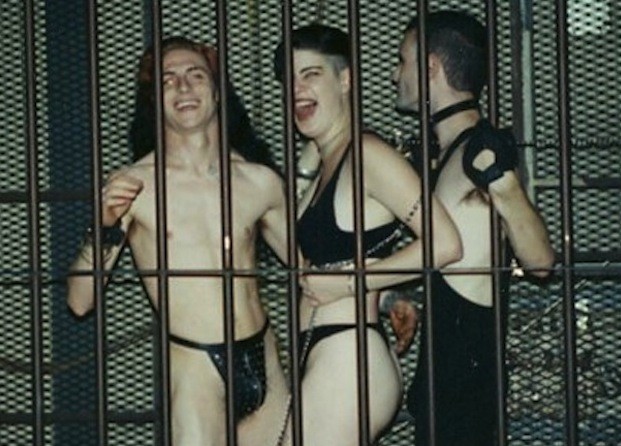
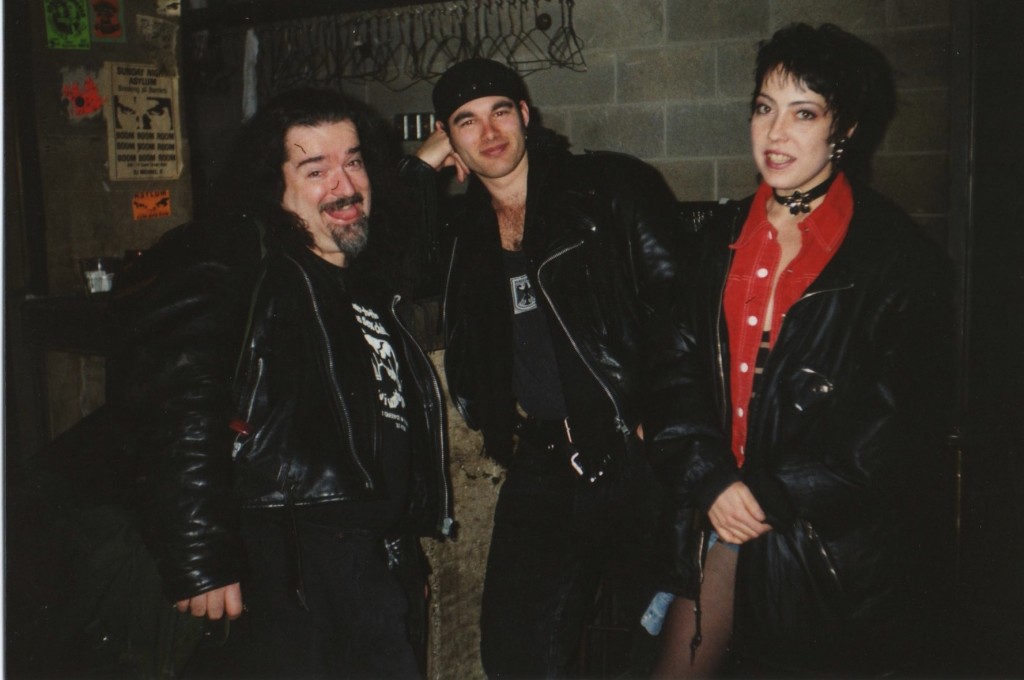
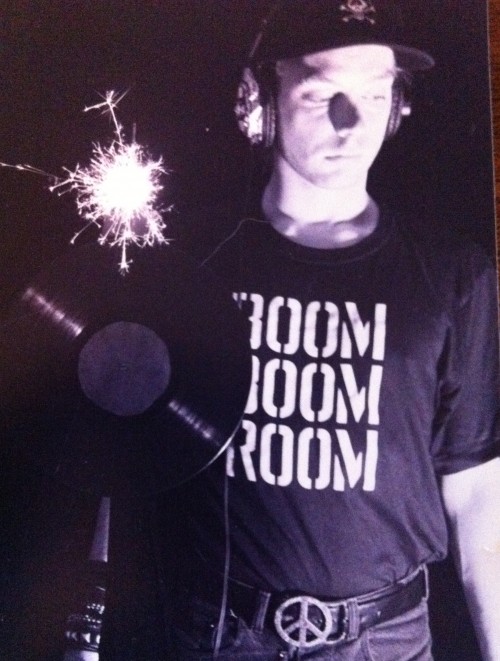
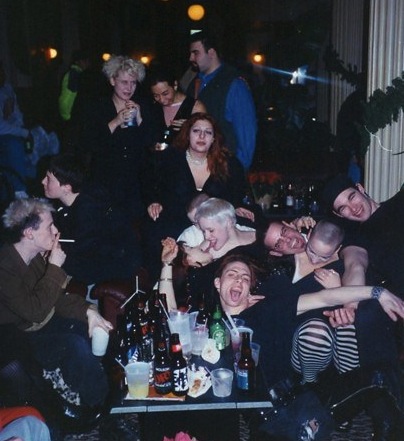
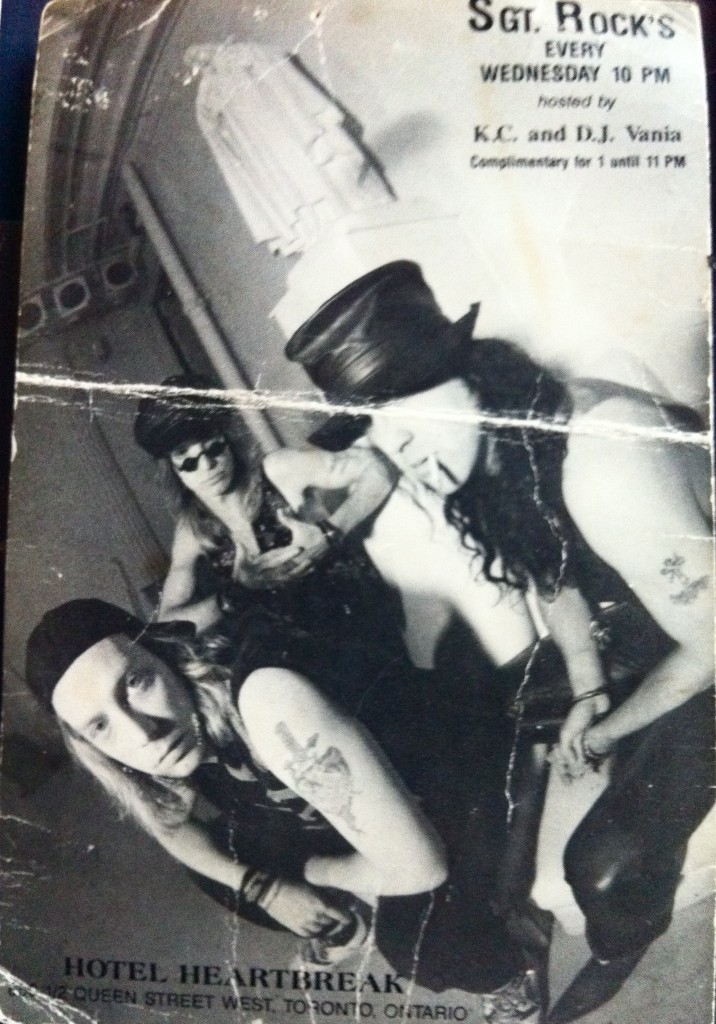
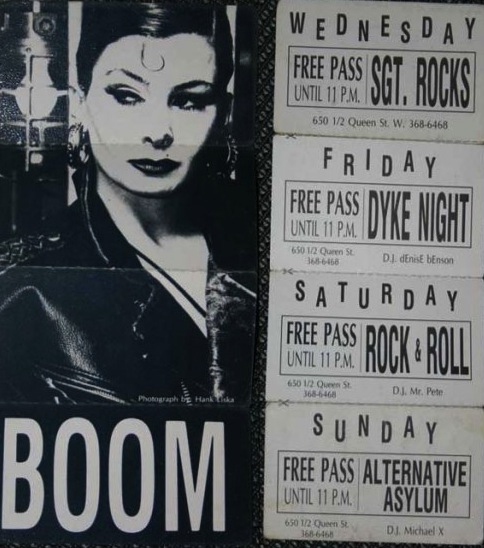
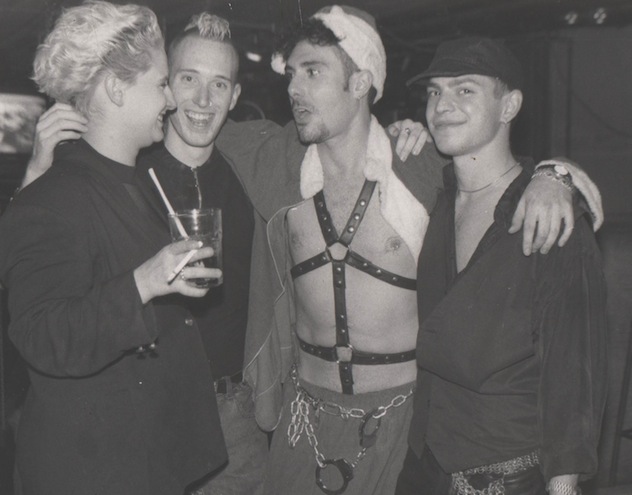
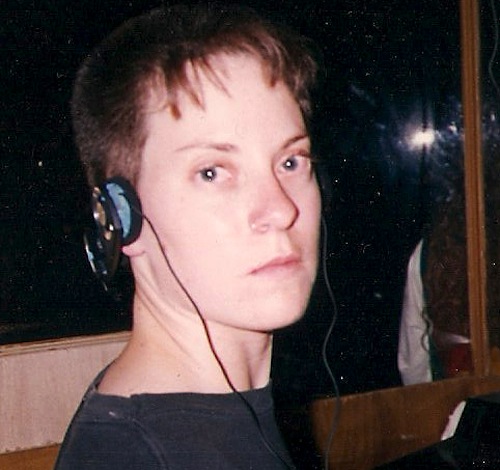
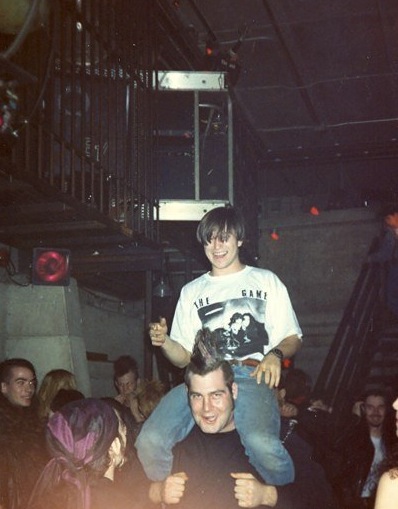
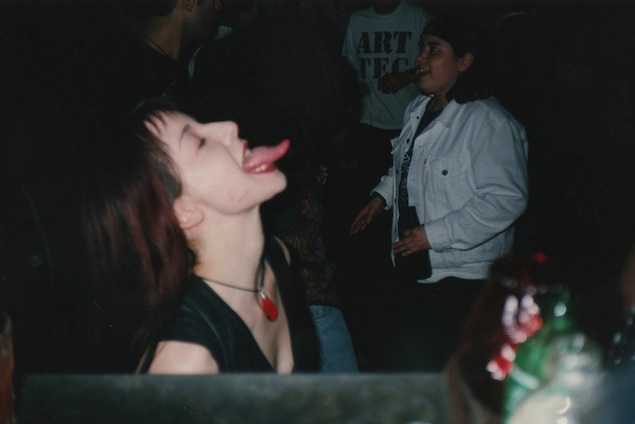
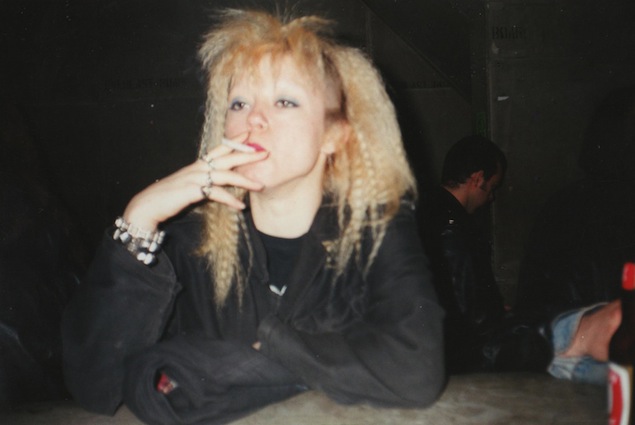
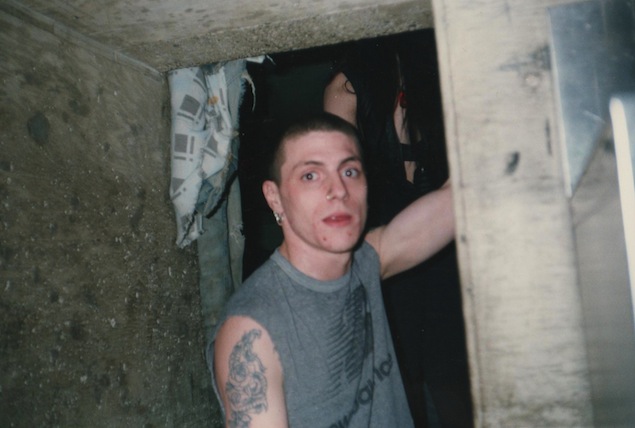
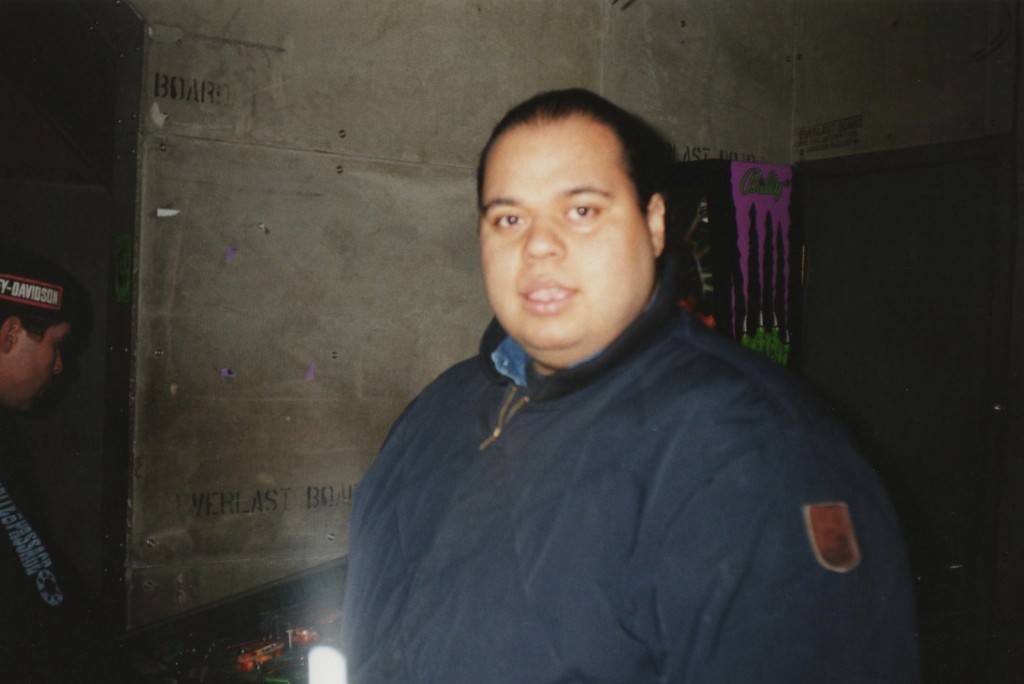
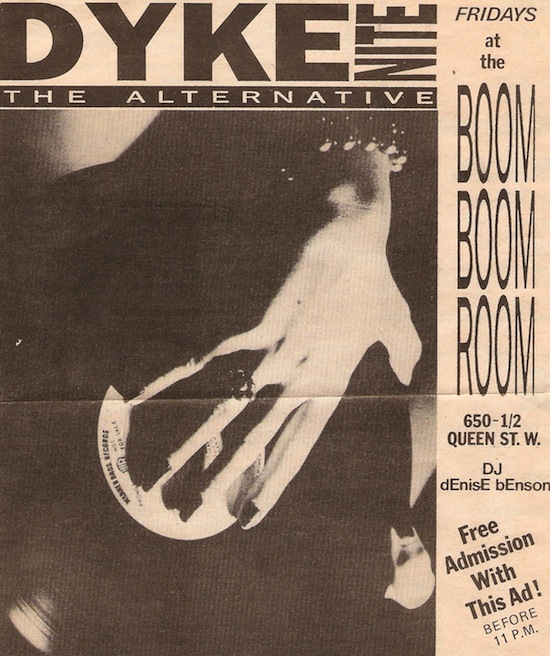
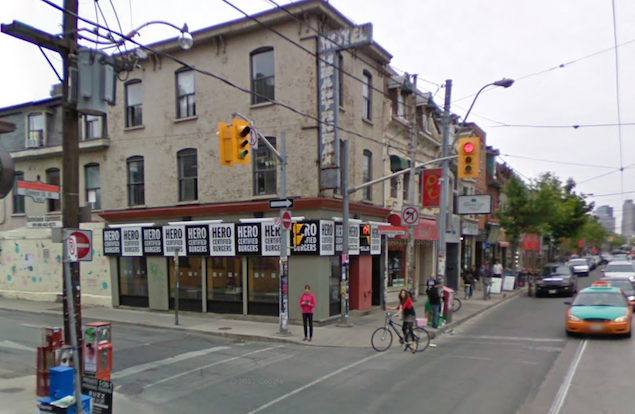
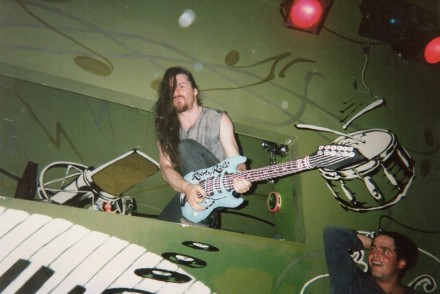
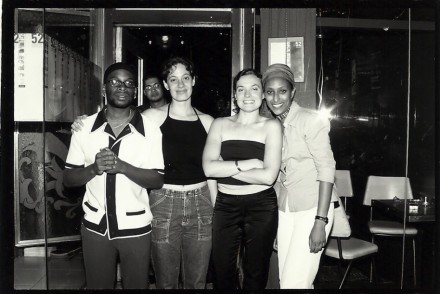
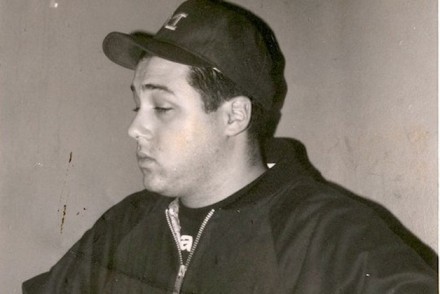

9 Comments
Great article Denise.
My name is Arne, I was the Thursday night dj for some time there. I believe Art and I called it Electronic Intersection or something like that.
I spun for only a short time there under the name, DJ Jett Stream.
Shortly after that stint Art had big planes for me and they made the alternative floor for me at the Bop!
After my stint at the Bop I spun at GoGo and Whiskey Saigon as their house dj for years.
All the while playing many other clubs in Toronto!
Such wonderful times!
It was actually called, Industrial Traffic!
Now I remember.
Mostly industrial or heavy dance traxs.
[…] as one of the world’s best night clubs. After purchasing it in 1990, Canadian brothers Lon, Steve, Doug and Peter Ballinger took more than two years to painstakingly renovate and re-purpose the massive space into the […]
Somebody commenting on an article about the closing of Pages Bookstore (also a Queen West institution) featured at the original (and much better) BlogTO website said it best; Queen Street West whored itself out for a lot of corporate chain stores (the real reason-IMHO-why venues like this one no longer exist.)
Amazing story here we are 2020 im from Australia 56 yeah old ex stage lighting guy for 26 yrs touring Australia with bands and tight now I am staying in the hotel on the top floor near the corner actually we have 2 windows looking into Palmerston Queen. My girl is 36 and our cat is 16 yrs old…If any of you old staff or anyone who was connected with this amazing club I would love to say hi. Thanks for this story and I wish I was here in Tornto at the time..I feel privileged to be staying in this hotel as I never knew the history of this place until another resident who is my age and a music producer told me about it s fee days ago whole smoking a joint in Palmerston and looking at the old sign…Thanks again
Hey ! Love the Article – The Bizarre Decor I did for the Volcano Room was inspired by Tiki Bars i saw as a child in California as well as The Ports of Call in Toronto where my Uncle sang – It was at one of your Dyke Nights that I stood on the metal staircase and said to myself that one day i will own this place and 8-9 years later i did – We lasted 2 years until Queen Street was torn up in both directions for streetcar track replacements and we closed it down – it was a Blast while it lasted !
Denise, what a marvelous article, and such a great flashback! Thanks for this! I lived not far from the Boom during the late 80′s and it was just as fabulous as you describe.
in 1991, i filmed several scenes of a thriller called “Liar’s Edge” for New Line Cinema there and my then-boyfriend worked in the background as a Cage dancer, complete with leather jockstrap. We shot every square inch of that club, so for those who would like to see a bit of history, it’s probably on iTunes.
Oh my god i know everyone in all these pictures from the boom boom room and this was long before everyone had a dumbsmartphone ! Thank you very very very much ! I worked there one summer as an promoter trying to stand in the shadow of one Steven Wong LOts of LOVE LOL ! ITs me mr homo modus operendi aka THEE HECTOR (4:20) from Bar One for aeons until we all vanished into thin air lol !
All comments in the string below have been republished from their original appearance on The Grid website. We’re including the readers’ comments as they add to these Then & Now stories. We look forward to reading new comments here as well.
Lola
Hee! What a great article. I was the first female cage dancer on boys night. I remember basically undressing them in the cage. I only got paid in free drinks, but it was so fun. Cept when I ripped my elbow open on the metal back wall of the cage. Hospital and stitches. Still have the scar! And when I smashed my head into an angled speaker and all but knocked myself out. Hehe. good times! 8:36 pm on February 13, 2013
tess
Wow what a blast from the past! Great story. I used to dance in that cage!! Also worked at the Bop. Man the good ol days. 10:55 am on February 11, 2013
Lon Ballinger
dear Denise thank you for the article it was a lot of fun to read and very accurate as well.We loved our experience in Toronto and we thank you all for being a part of our lives.We are still together here in N.Y.C. And we have a great place.You are all very welcome to come and visit us .We have many great Canadian friends who often drop by to see us.Our children are a large part of our business and we still enjoy what we are doing please take care and good luck with everything you guys are involved with .Sincerely Lon Ballinger 1:12 am on February 9, 2012
tess
Hey Lon, Spoke to Doug a few years back when I had a TV thing in NY but never got a chance to come by. Sounds like you guys are still going strong. tess 10:57 am on February 11, 2013
Barbarella
LOVE those pix of Shannon, Deanna + Michael X! Great article, awesome memories!  12:24 am on February 7, 2012
Die J! Mars
Great article Denise! My beginning as a dj literally started by standing in the rain for 5 hours in front of Sundays to promote my Tuesday gig at the Kat Klub. As a Club-Goer, I never had more fun than hanging there for Michaey X’s night. I would drink Dos Equiis underage at La Hacienda (coming with freak friends from Scarborough) and then sneak into Boom Boom Room. Funny enough, I worked for Steve Ballinger at his new Downtime club in NYC a few years ago and told him and he said “damn, you snuck into my club?!”. Ha! Cool pic of Dan! Anyone ever see him again? Barbarella! Looked for you for a while. Email me! 6:16 pm on March 1, 2012
Chad Gendron
My wife and I met there on a Dyke Nite in the summer of ’92. I used to do the videos for the Boom. Twenty years! Gotta go, my kids just broke a lamp! 6:06 pm on February 2, 2012
Steve O Skolney
I worked there as a bartender when it was still owned by the Ballingers , I moved over next to bartend at THE LIZARD LOUNGE. BOOM BOOM ROOM really was a one of a kind place. 10:28 am on February 2, 2012
Andrew P
Wednesday nights at the Boom Boom Room. Miss the days. 8:31 am on February 2, 2012
Deborah
The Boom was the best club ever! We used to drive in from Kitchener every Sunday to dance in the cage. It’s the place I first heard NIN, began to shed the “good girl” country bumpkiin image and begin to discover who I was. Out of all the Toronto clubs of the time I used to go to, the Boom is the only one I think of often and miss dearly. I think that I’ve compared every club I’ve been to since to the Boom, and none ever quite matched it. Fond memories indeed! 5:04 am on February 2, 2012
Tana
And-Bio Rhythm!!:) 11:05 pm on February 1, 2012
Tana
Oh man, this series is like -the BEST! Thanks for the memories. This period was indeed a time of social revolution-the RADDEST, in my opinion. Please please please get around to The Copa, and the raddest of the rad -Club Domino…! Thanks again! 9:30 pm on February 1, 2012
Diodeus
Sweet memories, thank you Denise. I spent some of the best hearing-loss generating nights there. 9:15 pm on February 1, 2012
Ryan
Amazing!! 5:40 pm on February 1, 2012
jinx
brilliant loved the read!! brings back a ton of memories and funny thing is – now i know james real last name – lmfao after all these years – only knew him as st bass 4:28 pm on February 1, 2012
shona fraser
i know my coming out process mainly happened because of, and on Dyke Night. it was the energy of the mostly female crowd that brought me all the way down from Richmond Hill in the very early nineties. You nailed it on the head when you said “it was like Cheers .. ” Excellent article! 4:56 pm on February 1, 2012